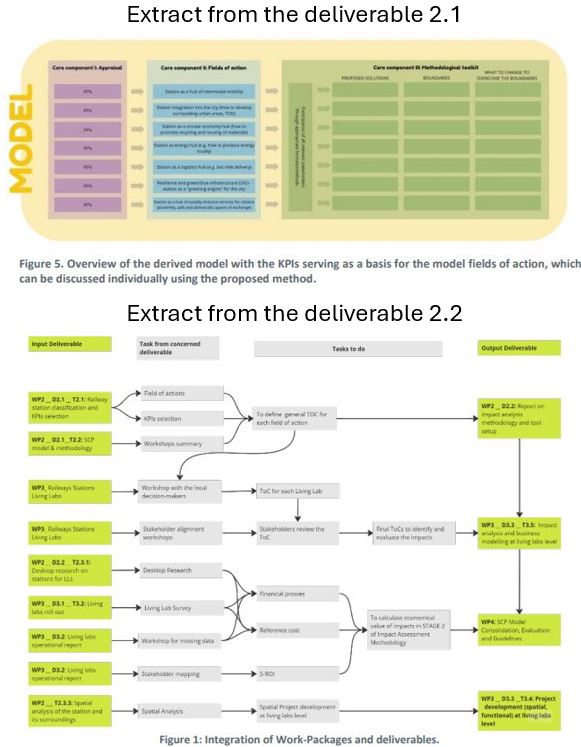Two pivotal deliverables, “Deliverable 2.1: Report on Railway Station Model and SCP Model” and “Deliverable 2.2: Report on Impact Analysis Methodology and Tool Setup“, within the European project RAIL4CITIES, have been recently accepted by Europe’s Rail. These deliverables introduce innovative pathways for transforming railway stations into vital components of sustainable urban environments and provide a comprehensive methodology for evaluating their impacts.
The Deliverable 2.1: Report on Railway Station Model and SCP Model presents an innovative model for both existing and future railway stations, emphasizing their significant role in fostering sustainable urban futures. Among the primary objectives of the model is to establish a common definition for European railway stations, recognizing their potential not merely as mobility hubs but as integral elements of urban life.
The proposed model, known as Sustainable City Promoter (SCP), consists of three core components:
- The first core component “Appraisal” involves a thorough review of existing station classification approaches and the identification of key performance indicators (KPIs) to assess the current and future stations.
- The second core component “Fields of action” provides detailed descriptions of various areas where action is required to harness the potential of railway stations for urban transformation, including key areas such as mobility, energy, and logistics.
- The third core component “Methodological toolkit” offers a set of methods for facilitating stakeholder collaboration to envision and discuss the appropriate path forward for each station and its context.
The deliverable delves into the scientific process behind the model’s development, including literature review and workshops that lead to the definition of the fields of action and the conception of the methodological toolkit. The model’s applicability will be tested in several living labs and case studies across Europe, with data collected in order to refine its final version.
The deliverable 2.2 Report on impact analysis methodology and tool setup focuses on developing a methodology for the impact analysis of the new station model within urban contexts. The central aim is to calculate the Sustainable Return on Investment (S-ROI), which integrates environmental and social factors alongside economic costs and benefits. The methodology incorporates three interrelated components:
- The Theory of Change (ToC) outlines activities, solutions, and impacts for each field of action identified in Deliverable 2.1, serving as a foundation for S-ROI and Multicriteria Analysis (MCA).
- The S-ROI component provides an objective indicator of the net contribution or overall benefit of each output, helping in selecting optimal solutions based on their comprehensive impact.
- The MCA complements S-ROI by integrating various economic, environmental, and social aspects to determine key solutions.
The methodology will be applied and tested in WP3 workshops within the living labs. Data from these living labs will be used to refine and validate the methodology, with subsequent evaluations conducted in WP4. This comprehensive impact analysis tool aims to guide the development of services and solutions that holistically address social, environmental, and economic factors within the context of railway station transformation.
The living labs across Europe will provide real-world contexts to validate and refine both the SCP model and the impact analysis methodology. The insights gained will be instrumental in finalizing the model and methodology, ensuring they are adaptable, practical, and effective in promoting sustainable urban development. These deliverables represent significant strides towards reimagining railway stations as pivotal elements in sustainable urban landscapes, with a robust framework for assessing their broader impacts on cities.
